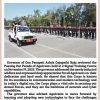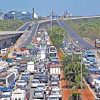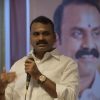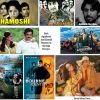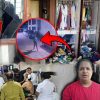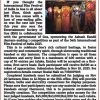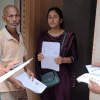Goa is abuzz with excitement as vintage bike and car owners, users, collectors and fans are decking […]

POST-GODHRA GENOCIDE STORY! BY FRANCOIS GAUTIER
In the News, Mar 05- Mar 11, 2022 March 4, 2022PROVOCATION: The alleged provocation for the mass killing of the Muslim community in Gujarat is claimed to have been triggered by the Godhra train carnage in which 58 pilgrims returning from Ayodhya burnt to death
By François Gautier
A French journalist exposes instigation by the BJP and RSS leading to the genocide of the Muslim community, allegedly as a reaction to the killing of pilgrims returning from Ayodhya at the Godhra railway station in Gujarat.
Godhra, a city of the Indian State of Gujarat, was the lead story in all Indian newspapers on February 27th-28th, 2002. A shattering piece of news: 58 Hindu pilgrims had been burned alive in a train. “57 die in ghastly attack on train” ran the Times of India’s headline; “Mob targets Ramsevaks [Devotees of Rama] returning from Ayodhya”; “58 killed in attack on train with Karsevaks [volunteers]” (The Indian Express); “1500-strong mob butcher 57 Ramsevaks on Sabarmati Express” (The Asian Age). But the BBC’s announcement had a very different tone: “58 Hindu ‘extremists’ burned to death” … or Agence France Press on March 2nd: “A train full of Hindu ‘extremists’ was burnt.”
A deluge of anguished news followed about a “Muslim genocide”: “Mass killings of Muslims in reprisal riots” (NYT, March 5th), “The authorities … share the prejudices of the Hindu gangs who have been busy pulping their Muslim neighbours” (The Observer, March 4th). We were told that Narendra Modi, Chief Minister of Gujarat, intended to eradicate Muslims from the State — more than 9% of Gujarat’s population, in other words five million people. We read that the police was conniving in the mass slaughter and did nothing to prevent it. Narendra Modi was compared to Hitler, or Nero. We shuddered reading the reports describing rapes and various horrors, supposedly inflicted on Muslims by Hindus.
Today, six years later, with the noises and cries of the wounds having fallen silent, what emerges from those events? What are the facts?
At 7:43 A.M. on February 27th, 2002, the Sabarmati Express rolled into the Godhra station, fortunately with a four-hour delay, in broad daylight. This train transported more than 2,000 people, mainly karsewaks on their way back to Ahmedabad after participating in the Poorna Ahuti Yagya at Ayodhya, a ritual at the traditional birthplace of Rama.
As it pulled out of the station, the train was pelted with stones and bricks, and passengers from several bogeys were forced to bring down their windows to protect themselves. Someone pulled the emergency chain: the train came to a halt about 100 metres away from the platform, surrounded by a large crowd of Muslims. The railway police managed to disperse the crowd, and the train resumed its journey.
Within minutes, the emergency chain was simultaneously pulled again, from several coaches. It halted at about 700 metres from the station. A crowd of over 1,000 surrounded the train, pelting it with bricks, stones, then burning missiles and acid bulbs, especially on the S-5, S-6 and S-7 coaches.
The vacuum pipe between coaches S-6 and S-7 was cut, thereby preventing any further movement of the train. The doors were locked from outside. A fire started in coach S-7, which the passengers were able to extinguish. But the attack intensified and coach S-6 caught fire and minutes later, was in flames. Passengers who managed to get out of the burning compartment were attacked with sharp weapons, and stoned. They received serious injuries, some were killed. Others got out through the windows and took shelter below the coach.
Fifty eight pilgrims were burned alive, including twenty-seven women and ten children. The whole attack lasted 20-25 minutes.
What transpired then, in the Indian press? Let’s imagine a coach of French pilgrims coming back from Lourdes, burned alive.
Strangely, instead of clearly, straightforwardly condemning the act, the Indian English-language press tried to justify it: “Pilgrims provoked by chanting pro-Hindu slogans” (they were not slogans but bhajans, or devotional songs, ending with “Jai Sri Ram” (Victory to Sri Rama). “It’s because they were returning from Ayodhya, where they asked for the reconstruction of a temple at the traditional birth place of Rama; this offends the feelings of the Muslims.” In sum, the victims, roasted alive, were guilty.
The Anger
Numb with shock, the people of Gujarat did not react straightaway. They remained calm at first. Till that afternoon, when the charred bodies started arriving at their respective families — with no comforting voice sounded, either from the government, or from the media, no condemnation for this barbaric act, but an indifferent, deafening silence — then these people known for their non-violent nature and exceptional patience, burst into a frenzy.
There was a revolt in the whole of Gujarat. For three days, tens of thousands of enraged Hindus set fire to Muslim shops, houses, vehicles: They came out from all sides, all parties, all classes, uncontrollable — one cannot control a revolution (except in China maybe). The fatalities: 720 Muslims, 250 Hindus, according to official figures.
We read all over about a “genocide of Muslims.” Do we remember a single report on the Hindus who heroically helped save Muslims in their neighbourhood? Was even one family of Hindu victims interviewed following the criminal burning of the Sabarmati Express? One fourth of the dead in the ensuing riots were Hindus. How to classify those 250 victims? Who evoked the dead on the Hindu side? According to reports, Congress Party councillor Taufeeq Khan Pathan and his son Zulfi, notorious gangsters, were allegedly seen leading Muslim rioters. Another such character, Congress member of the Godhra Nagarpalika [municipality], Haji Balal, was said to have had the fire-fighting vehicle sabotaged beforehand.
Then, he stopped the vehicle on its way to the Godhra Station and did not allow it to proceed any further. A man stood in front of the vehicle, the mob started pelting stones, Theheadlights and the windowpanes of the vehicle got damaged … Fearing for his own and his crew’s life, the driver drove the vehicle through the mob, as it was not possible to move backwards. The mob gave in but 15-20 precious minutes had been lost. Lost for a coach full of innocent people in flames.
Which newspaper article stated that the most violent events took place following provocations by leaders of this sort? The Union Home Ministry’s Annual Report of 2002-03 stated that 40,000 Hindus were in riot relief camps. What made those 40,000 Hindus rush to relief camps? To seek protection from whom? Why was it necessary if they were the main aggressors?More than the barbaric event itself, it is the insensitivity of the Indian “elite” and of the media that infuriated the Gujaratis.
Those accused of terrorism often receive political support, are benevolently portrayed by the media, and a host of “human rights” organisations are always on hand to fight for them. But those victims whose life is cut down for no reason, are they not “human” enough to get some rights too? The great majority of those who took to revolt in Gujarat were neither rich nor particularly intellectual — neither right nor left: they were middle- and lower-class Gujaratis, simple people, workers, also tribals. But some from the upper middle class, among them a lot of women, took part in the upheaval.
The media sources
Apart from local journalists usually more objective in their reports, no English media reporter, thought it worthwhile to look deeper into the events at the Godhra railway station. Nobody came to question possible survivors of the tragedy. Is a coach of Hindu pilgrims even worth the trip? They had to wait for the “elite” to react; they had to receive directives from the politically correct, before taking their pens. Worse, they reported deliberate rumours and made up versions as actual news.
We were told, for instance, that when some pilgrims got off the ill-fated coaches to have tea, “some altercation took place” between them, and a Muslim tea vendor: “They argued with the old man on purpose,” wrote some newspapers; “they refused to pay for their tea” (though Gujarati honesty is well known); “they pulled his beard and beat him up … They kept shouting ‘Mandir ka nirmaan karo, Babar ki aulad ko bahar karo’ (start building the temple and throw out the sons of Babar). Hearing the chaos, the tea vendor’s 16-year-old daughter came forward and tried to save her father from the karsevaks. She kept pleading and begging them to leave him alone. The karsevaks, according to this version, then seized the girl, took her inside their compartment and closed the door. The old man kept banging on the door and pleaded for his daughter. Then two stall vendors jumped into the last bogey, pulled the chain, and put the bogey on fire.”
But would they have been stupid enough to set fire to the coach where their colleague’s young daughter was being held? And why were 2,000 Muslims assembled there at 7 A.M. with jerry-cans of petrol bought the previous evening?
Rajeev Srinivasan, an American journalist of Indian origin, was e-mailed this anonymous report a dozen times, supposedly written by Anil Soni, Press Trust of India reporter. He contacted Anil Soni to check on the veracity of this account. Soni answered:
Some enemy of mine has done this to make life difficult for me, do you understand, sir? I did not write this at all. I am a PTI correspondent. Yes, that is my phone number, but it is not my writing. Anil Soni apparently had heard about it from hundreds of people, and was upset to see a false report circulated in his name.
Arson and Canards
On the afternoon of February 28th, Gujarati Hindus’ revolt broke out. A few journalists then booked their tickets for Gujarat. As far as we can see, they had a framework in place: the outbreak would be dealt with independently of the Godhra carnage, as a different, unrelated subject; it was a planned violence perpetrated by “fundamentalist” Hindus against Gujarat’s Muslims, fully backed by the State of Gujarat. From this day on, the burning of coach S-6 was to be left behind, forgotten.
On February 28th evening, Chief Minister Narendra Modi announced his decision to deploy the Army, and the next day, March 1st, by 11 A.M. the actual deployment of troops at sensitive points had begun. Violence abated in most major cities, after their arrival with orders to shoot on sight. But security forces were largely outnumbered by the angry flood of people, spreading for the first time like rivers in spate, to rural areas and villages. Apprehending the seriousness of the situation, Narendra Modi had made a request for security personnel from neighbouring States of Maharashtra, Madhya Pradesh, Rajasthan and Punjab. This request was turned down by each State. Why did no one report this fateful refusal?
That same day (1st March), at the peak of the turmoil, the National Human Rights Commission faxed a notice to the Gujarat Government, calling for a report within three days on the measures being taken … “to prevent any further escalation of the situation in the State of Gujarat which is resulting in continued violation of human rights of the people.”[5] But it was silent on what had led to such a situation in the first place.
One major event which received a great deal of attention from the media was the conflagration at the Gulbarg Society in Ahmedabad, home of a former Member of Parliament, Ehsan Jaffri. This man, rather refined and usually respected, did not feel threatened. But on February 28th morning, a crowd surrounded his house, in which a number of Muslims had taken refuge. Jaffri made a number of panic-stricken phone calls for help to authorities and to his colleagues, journalists and friends. The crowd was growing … (from 200 to 20,000, figures vary in the reports). The Indian Express (March 1st, 2002), as well as police records, reported that “eventually, in panic, he fired at the 5,000-strong mob … 2 were killed and 13 injured … That incensed the mob …” which at 1:30 P.M. set the bungalow ablaze by exploding a gas cylinder. Final toll: 42 (March 11th edition).
Human Rights Watch, an NGO based in New York, published a dossier (on April 30th, 2002) about the Gujarat events which caused a sensation and fed a large number of articles in the international press.
In this report, Smita Narula had an unnamed “witness” at hand, to relate the attack on Jaffri’s house. First “a 200 to 500-strong mob threw stones; refugees in the house (also 200-250 people — sic!) also threw stones in self-defence.” Then the crowd set the place on fire at about 1:30 P.M. Our witness then jumped from the third floor where he was hiding — and from where he had been observing in minute detail all that was going on in the ground floor, even the theft of jewels (it would seem the floors between the third and the ground floor were transparent). At that point we jump into the sensational. Narula’s witness sees that “four or five girls were raped, cut, and burned …; two married women were also raped and cut. Some on the hand, some on the neck” …; “Sixty-five to seventy people were killed.” Those rapes and hackings are said to have started at 3:30 P.M. … when the house was already on fire. Was the mob waiting for everything to be reduced to cinders to commit its crimes?
Among the most morbid canards, the novelist Arundhati Roy’s vitriolic article (Outlook magazine, May 6th, 2002). She describes the event which precedes Ehsan Jaffri’s death (extract):
… A mob surrounded the house of former Congress MP Iqbal Ehsan Jaffri. His phone calls to the Director-General of Police, the Police Commissioner, the Chief Secretary, the Additional Chief Secretary (Home) were ignored. The mobile police vans around his house did not intervene. The mob broke into the house. They stripped his daughters and burned them alive. Then they beheaded Ehsan Jaffri and dismembered him …
Wait a minute. Jaffri was burned alive in the house, true — is it not awful enough? Along with some other 41 people. Not enough? But his daughters were neither “stripped” nor “burnt alive.” T. A. Jafri, his son, in a front-page interview titled “Nobody knew my father’s house was the target” (Asian Age, May 2nd, Delhi ed.), felt obliged to rectify:
Among my brothers and sisters, I am the only one living in India. And I am the eldest in the family. My sister and brother live in the US. I am 40 years old and I have been born and brought up in Ahmedabad.
There we are, reassured as regards Ehsan Jaffri’s children. He had only one daughter, who was living abroad. No one was raped in the course of this tragedy, and no evidence was given to the police to that effect.
The Gujarat Government sued Outlook magazine. In its May 27th issue, Outlook published an apology to save its face. But in the course of its apology, the magazine’s editors quoted a “clarification” from Roy, who withdrew her lie by planting an even bigger one: the MP’s daughters “were not among the 10 women who were raped and killed in Chamanpura that day”! From Smita Narula to Arundhati Roy, “four or five girls” had swollen to “ten women,” equally anonymous and elusive.
Roy begins theatrically:Last night a friend from Baroda called. Weeping. It took her fifteen minutes to tell me what the matter was. It wasn’t very complicated. Only that Sayeeda, a friend of hers, had been caught by a mob. Only that her stomach had been ripped open and stuffed with burning rags. Only that after she died, someone carved ‘OM’ on her forehead.
Balbir Punj, Rajya Sabha MP and journalist, shocked by this “despicable incident” which allegedly occurred in Baroda, decided to investigate it. He got in touch with the Gujarat government.
The police investigations revealed that no such case, involving someone called Sayeeda, had been reported either in urban or rural Baroda. Subsequently, the police sought Roy’s help to identify the victim and seek access to witnesses who could lead them to those guilty of this crime. But the police got no cooperation. Instead, Roy, through her lawyer, replied that the police had no power to issue summons.
Courtesy: The Academia
